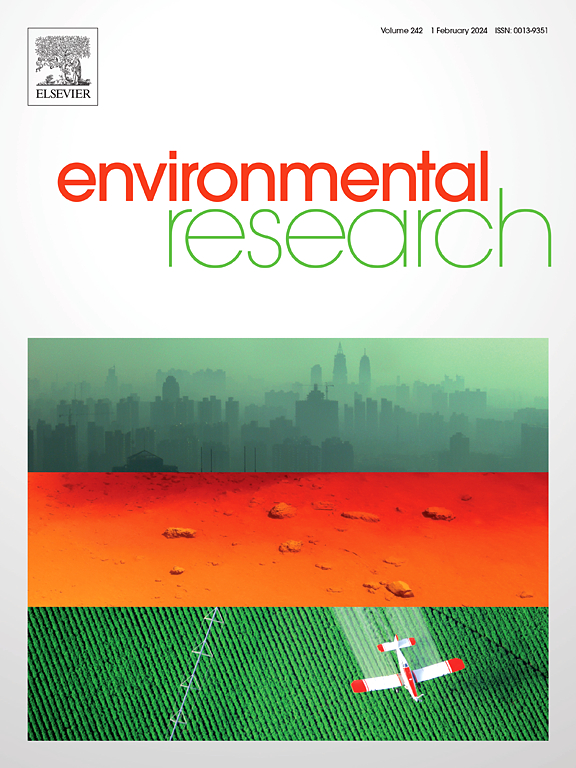三峡大坝改变了长江微塑料的空间分布和通量。
IF 7.7
2区 环境科学与生态学
Q1 ENVIRONMENTAL SCIENCES
引用次数: 0
摘要
水坝的建设破坏了河流的自然连通性,可能会改变污染物的分布和移动。然而,大坝对微塑性通量的影响很少被考虑。综合前人研究成果,通过补充采样,绘制了三峡库区表层水、底泥、消落带和河岸带的MPs分布分布图。三峡水库是MPs的重要集聚区,三峡水库水体中MPs的浓度明显高于上游河水。在水库中,MPs主要集中在水柱的上、下游段、涨落带和沉积物中,而在河岸带中,MPs浓度在下游段较高。库区水体MPs分布与区域国内生产总值(GDP)和污水排放量呈显著正相关(R2 > 0.9),而影响沉积物、涨落带和河岸带MPs分布的因素更为复杂。人类活动,特别是人口密集地区的废水排放,对水库中MPs负荷的贡献占49.89%。三峡水库每年捕获约11,091±6,998吨MPs,占长江上游MPs通量的28.18%。本文章由计算机程序翻译,如有差异,请以英文原文为准。

The Three Gorges Dam alters the spatial distribution and flux of microplastics in the Yangtze River
The construction of dams disrupts the natural connectivity of rivers, potentially altering the distribution and movement of pollutants. However, the impacts of dams on microplastic (MP) flux are scarcely considered. By integrating previous findings and conducting supplementary sampling, we mapped the distribution of MPs in the Three Gorges Reservoir (TGR), covering surface water, sediment, the hydro-fluctuation belt, and the riparian zone. The TGR serves as a significant accumulation zone for MPs, with a notably higher concentration of MPs in its water compared to the upstream river water. In the reservoir, MPs are concentrated in the upstream and downstream sections of the water column, the hydro-fluctuation belt and sediment, whereas in the riparian zone, concentrations are higher in the downstream section. The distribution of MPs in reservoir water is strongly correlated (R2 > 0.9) with regional gross domestic product (GDP) and sewage discharge, whereas the factors influencing MPs in sediment, the hydro-fluctuation belt, and the riparian zone are more complex. Human activities, particularly wastewater discharge in populated areas, predominantly contributed 49.89 % to the MPs load in the reservoir. The TGR captures approximately 11,091 ± 6,998 tons of MPs annually, constituting 28.18 % of the MPs flux from the upper Yangtze River.
求助全文
通过发布文献求助,成功后即可免费获取论文全文。
去求助
来源期刊

Environmental Research
环境科学-公共卫生、环境卫生与职业卫生
CiteScore
12.60
自引率
8.40%
发文量
2480
审稿时长
4.7 months
期刊介绍:
The Environmental Research journal presents a broad range of interdisciplinary research, focused on addressing worldwide environmental concerns and featuring innovative findings. Our publication strives to explore relevant anthropogenic issues across various environmental sectors, showcasing practical applications in real-life settings.
 求助内容:
求助内容: 应助结果提醒方式:
应助结果提醒方式:


